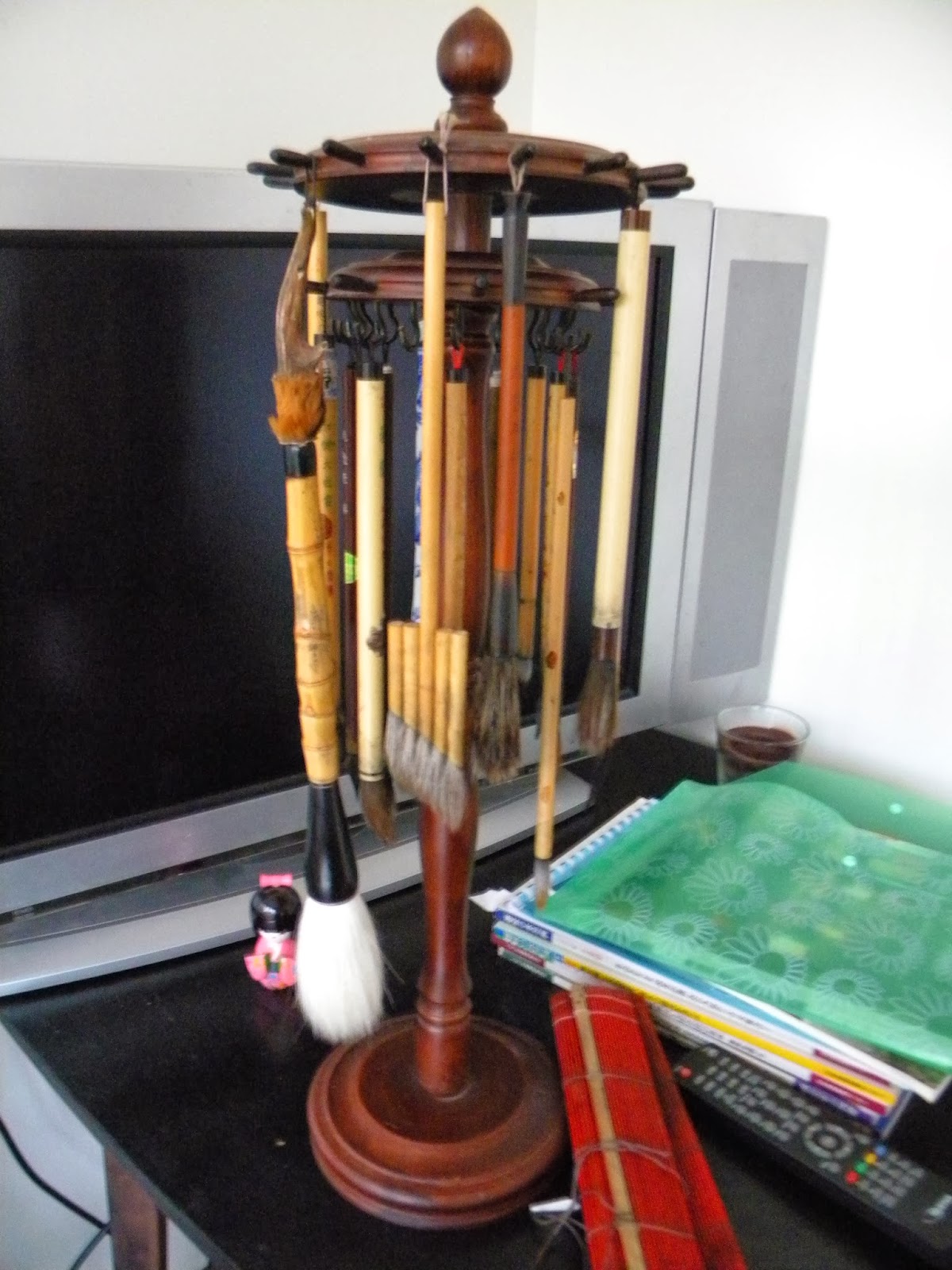Second poem from Sen no Rikyu's Hundred Verses reads as follows:
Naraitsutsu mitekoso narae narawazu ni
yoshiashi iu wa oroka narikeri
ならひつつ 見てこそ習へ 習はずに
よしあし いふは愚なりけり
In the learning process, watch and
learn; voicing opinions without
having done this is foolishness.
My insight:
The Way of Tea is the way of purification of mind and heart through humbling oneself. From my own experience I can say that arrogance is rooted in me so deeply, that getting rid of it isn't an easy task. The moment I learned something about Tea and procedures of folding fukusa, purifying natsume and chashaku, immediately I began seeing how other students are doing it. Do they do it correctly, as teacher was teaching, or not... I began comparing myself with them, thinking who is doing better. When I cought myself on thinking like that, I realized that externally I have been "purifying" myself, but the moment I compared or criticized others, I would become corrupted in my heart. Immediately the "dirt" of mundane whould find its way back into my mind.
I realized that even if I might know something, it doesn't make me better or more advanced than the others. Knowledge that I gain in the Tea Room (as teacher said "Tea training hall") should make me more humble. The more we learn the more we understand how much we don't know. It is trully foolish to voice one's opinion without doing it; but what is even more foolish - to voice the opinion when you HAVE done it. Than it becomes obviouse that this kind of student is missing the point of the Way.
The question that helps me to "divide" myself before speaking out: "What is my motivation in saying it?" If motivation is self-centered, it will always hurt the person. If motivation is based on love and care, even if it might be hard to hear, the person will be grateful for it, because he/she will feel your heart.
Third poem:
Kokorozashi fukaki hito ni wa iku-tabi mo
awaremi fukaku oku zo oshiuru
こころざし深き人にはいくたびも
あはれみ深く奥ぞ教ふる
You should many a time compassionately
impart the inner teachings
to one wha has a deeply willing mind.
My insight:
I have been studying The Way of Tea since 2012 February. During this time I have seen quite many people coming and going to the Tea Room. Also after observing teacher, the way she is conveying knowledge, to whom, I made a conclusion: everyone has different reasons for coming here. Someone studies Japanese culture in Univeristy, others heard that Japanese Tea ceremonies are a high level art and aesthetics, and they would like to learn that because it is prestigious. Others are on the way of search for the things that are most valuable in life. I am sure that all these reasons are valid. Nevertheless, Tea isn't about beauty or art alone. And tea master who takes on students has a great task infront of him/her - to understand everyone's motivation for studying and teach according to student's expectations.
It might sound a bit harsh, but it reminds me of Jesus' words:
"Don't waste what is holy on people who are unholy. Don't throw your
pearls to pigs! They will trample the pearls, then turn and attack you." Matthew 7:6
I have seen how hard it is for a teacher to explain internal things for those who are interested in external. And I have seen how amazing atmoshpere can be created when student is open-minded, searching for meanings. This spirit naturally creates conditions where teacher is willing to teach more and more, share the deepest secrets. Reason is simple - finally there is someone who can connect with the same heart.
From my own experience, I remember telling some of my friends, why I study the Way of Tea. They are very good people, but because they are absolutely not interested in it, their reactions to my stories would discourage me from sharing anything at all. "What is a big deal to make a cup of tea?" they would ask, with a bit of a condescending attitude. That would be enough for me to change the topic.
When something is taking a special part in your heart, you will want to share it only with those who trully understand you and can appreaciate it.
 , a translation of a 13th century work entitled Collection of Stone and Sand.
, a translation of a 13th century work entitled Collection of Stone and Sand.












